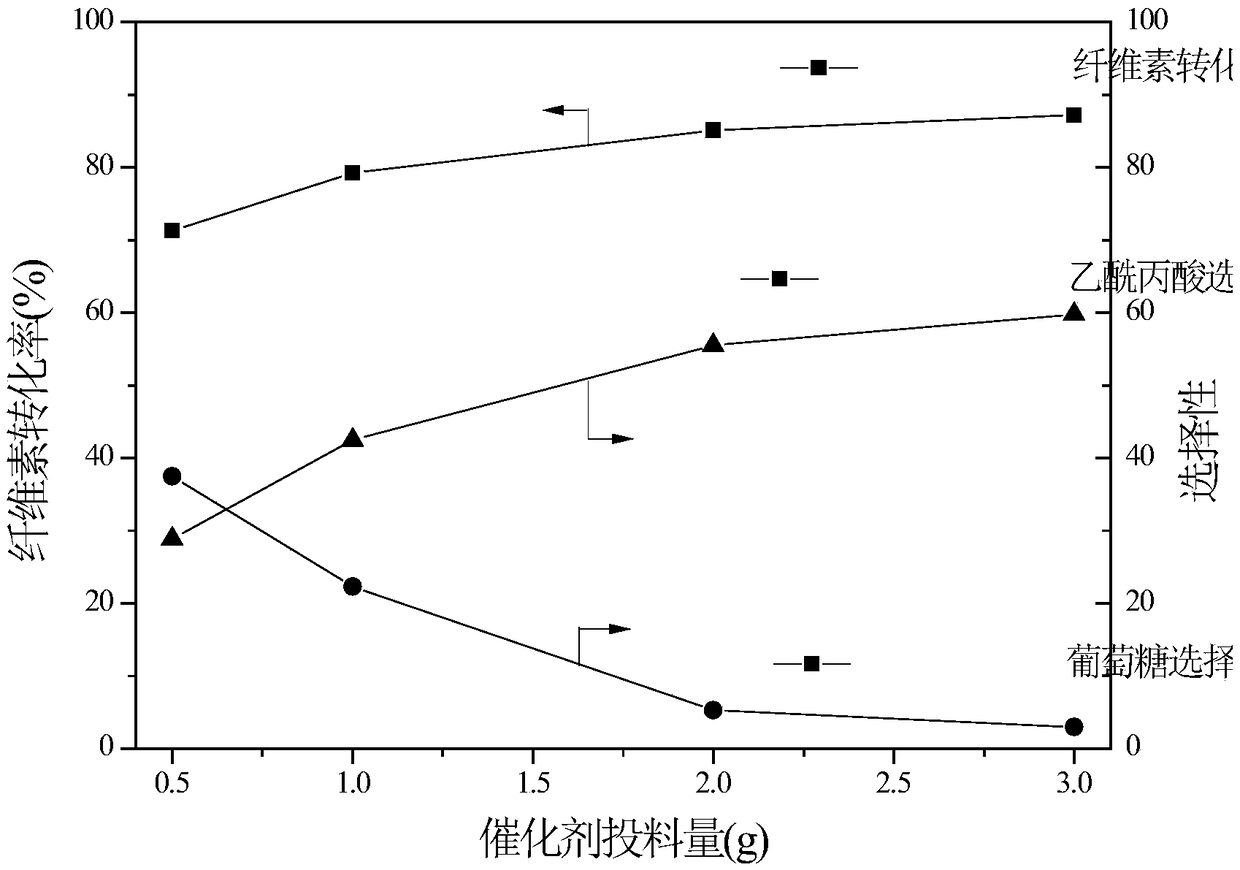Thermo-sensitive acidic ionic liquid and preparation method and application thereof in catalyzing microcrystalline cellulose hydrolysis
An acidic ionic liquid, microcrystalline cellulose technology, applied in the preparation of carboxylate, sugar derivatives, chemical instruments and methods, etc., can solve the problem of increasing processing costs and environmental pressure, difficult separation and recovery of acidic catalysts, and reusable It has the advantages of excellent hydrolysis activity, easy separation and recovery, and convenient recovery.
- Summary
- Abstract
- Description
- Claims
- Application Information
AI Technical Summary
Problems solved by technology
Method used
Image
Examples
preparation example Construction
[0055] The temperature-sensitive acidic ionic liquid prepared according to the present invention can realize the recovery of the liquid acid catalyst by adjusting the temperature-sensitive property of the catalyst, and both the recovery of the catalyst and the environmental problems will be greatly improved. The temperature-sensitive ionic liquid catalyst not only has a hydrolysis effect, but also solves the recovery problem of the acidic catalyst. Commercial ionic liquids are generally soluble in water and do not have acidic groups, and need to be coupled with other acidic catalysts for reaction, which greatly limits the application of ionic liquids in the process of hydrolyzing cellulose.
[0056] In addition, since the temperature-sensitive acidic ionic liquid of the present invention itself is an acidic catalyst, it can greatly destroy the cellulose crystal structure and speed up the reaction rate. Compared with other two-liquid phase systems, it is not necessary to add oth...
preparation Embodiment 1
[0061] Betaine (0.03mol) and bistrifluoromethanesulfonic acid imide (0.03mol) were stirred uniformly in water, then heated and reacted in an oil bath at 60°C for 1h. After the reaction was completed and cooled to room temperature, the water in the flask was removed by suspension steaming, and the obtained solid was dried at 40° C. under vacuum for 12 hours, and the obtained solid was a solidified acidic ionic liquid catalyst.
[0062] figure 1 It is a photo of the acidic ionic liquid catalyst obtained in Example 1 dissolving in high-temperature water. When the temperature rises to 60° C., the ionic liquid catalyst is completely miscible with water to form a homogeneous catalyst system.
[0063] figure 2 It is a photograph of the precipitation of the acidic ionic liquid catalyst obtained in Example 1 in water at room temperature. When the temperature drops to room temperature, the ionic liquid catalyst precipitates from the water phase to form a two-liquid phase catalyst syst...
preparation Embodiment 2
[0065] Betaine (0.03 mol) and tetrafluoroboric acid (0.03 mol) were stirred uniformly in water, then heated and reacted in an oil bath at 60° C. for 1 h. After the reaction was completed and cooled to room temperature, the water in the flask was removed by suspension steaming, and the obtained solid was dried at 40° C. under vacuum for 12 hours, and the obtained solid was a solidified acidic ionic liquid catalyst.
PUM
 Login to View More
Login to View More Abstract
Description
Claims
Application Information
 Login to View More
Login to View More - R&D
- Intellectual Property
- Life Sciences
- Materials
- Tech Scout
- Unparalleled Data Quality
- Higher Quality Content
- 60% Fewer Hallucinations
Browse by: Latest US Patents, China's latest patents, Technical Efficacy Thesaurus, Application Domain, Technology Topic, Popular Technical Reports.
© 2025 PatSnap. All rights reserved.Legal|Privacy policy|Modern Slavery Act Transparency Statement|Sitemap|About US| Contact US: help@patsnap.com



